Malingsbo Church and Mansion
History of St Anne's Chapel
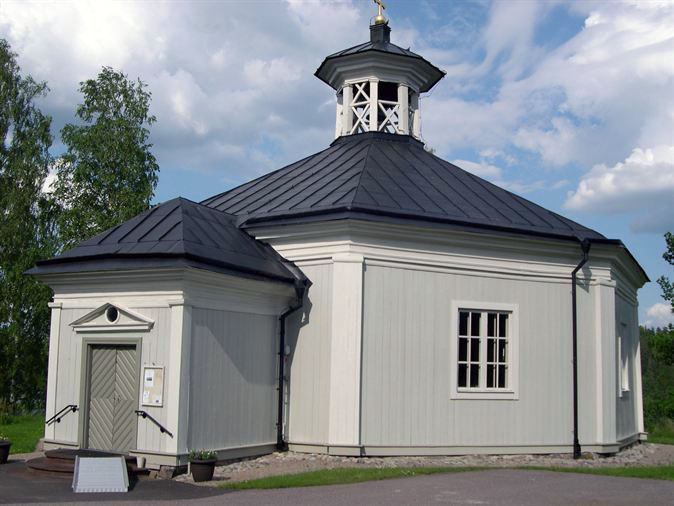
Malingsbo Church
Malingsbo earliest settlements could not be established. In the 1500s there was a migration of the Finns. Still today there are names remaining of Finnish origin on the ponds and lakes, such as 'Kalimpa', 'Lakti' and so on. The area was called Söderbärke, "Finn district”. The Finns were skilled in making charcoal, which was an asset in the 1500's nascent mining industry. In the outflow from Lake Malingsbo the first "miner forge" was built. It was named Malingsbo works.
The connection with Söderbärke continued over almost trackless mountains and swamps. From about the year 1600 Malingsbo began to be visited by Söderbärke priests every seventh Sunday. They held church services in some of the miner's cottages. A larger hall was established at the mansion in 1680 with a pulpit and benches. Services were then held once a month. In 1700 the building was ravaged. The mill's former owner, the governor of Nyköping County, Peter (Petter) Snack1 - his portrait is to the left of the choir - rebuilt the mansion.
Peter Snack erected the church in Malingsbo at his own expense. During the years 1707 and 1708 it was under the direction of master miner Adam Leijel2. In August 1706 Peter Snack married Adam Jacobsson Leijel’s younger sister Maria. This new works chapel was introduced for the first time on October 25 1708. It opened on 5 March 1711. The chapel was dedicated to the miners' patron saint of Santa Anna.
Drawings for the St. Anne's Chapel, in Byzantine style with octagonal floor plan and with ridge turrets of bells, have been filed by the famous Nicodemus Thessin the Younger (this is however not confirmed!). Some ten years later the chancel was built by the works owner Baron Carl Gustaf von Ehrenheim, Peter Snack’s grandson – see the portrait to the right of the chancel. Until 1776 the remaining wall logs inside were naked and bare, but they were covered by wood paneling and wallpaper that was painted by master painter Svedberg. His well-matched colour harmonies can still be seen in the choir.
In 1745 the works hired their first preacher (previously the church was served by Söderbärke). In 1863 Malingsbo became a church and parish of its own.
The church was donated to the then newly formed congregation of the utility owner and state councilor Per Jakob von Ehrenheim. The names are inscribed in the pulpit.
Two major restorations have been made: In 1913 the roof was raised and an otherwise "tough" revision was undertaken in the years 1952- 1953. The 1700s atmosphere was restored wherever possible. Leader of the work was an architect Claes Laurent. Artist Jerk Werkmäster restored the paintings (behind the wall is the original painting).
Interior inventory
The altarpiece came at the Ehrenheimska building of the sanctuary.
The pulpit is probably also from that time (may be original).
The old altar to the right of the chancel is probably from the 1600s. It was listed in 1952 on the church inventory.
The old number board to the right of the chancel is from 1737.
The chandelier in the front is given by Carl Gustaf von Ehrenheim in 1765.. The second, which features a female figure (St. Anna or Peter Snacks wife?), was donated by Peter Snack.
The third crown is also from the 1700s.
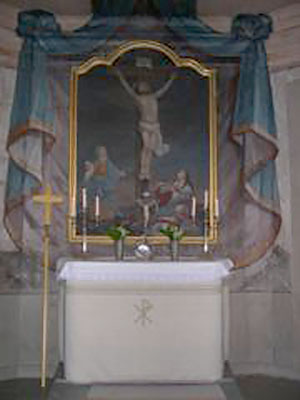 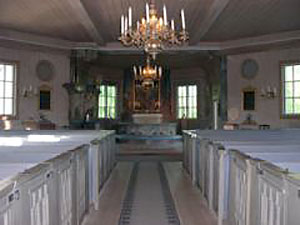 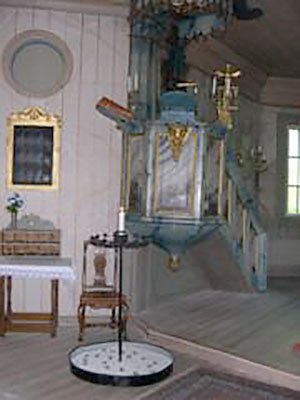
Altar, aisle and pulpit
The offertory in front of the left bench block dates from the time the church first came into existence. The organ has ten parts and was built by Setterquist & Son in 1946.
The large bell is cast in Stockholm in 1906 by Bergholtz & Co and the little clock made in Falun in 1707 by Gerhardt Meyer.
Permission to bury their dead in Malingsbo was given in 1754, but the cemetery was not finished and consecrated until 1786. It is located some distance from the church on the slope on the other side of Hedströmmen. The cemetery chapel was built by the family Heijkensköld, in the 1870s.
Since 1970 Malingsbo belongs to Söderbärke Assembly.
Notes:
1 Peter Snack (1632-1713) married Maria Jakobsdotter Leijel in 1706. She was his fourth wife.
2Adam Jakobsson Leijel (1658-1729) died in Stockholm and is buried in the St. Nickolai Church there. He became the factory owner of Hammarby Ironworks. He was eventually naturalised as a Swede and ennobled on 28 May 1717 and introduced into the Riddarhus in 1719 under the number 1533. (genealogical notes from Peter Leyel)
Source:
https://www.svenskakyrkan.se/default.aspx?id=643055
Compiled and translated to English by Peter Leyel
Malingsbro Mansion
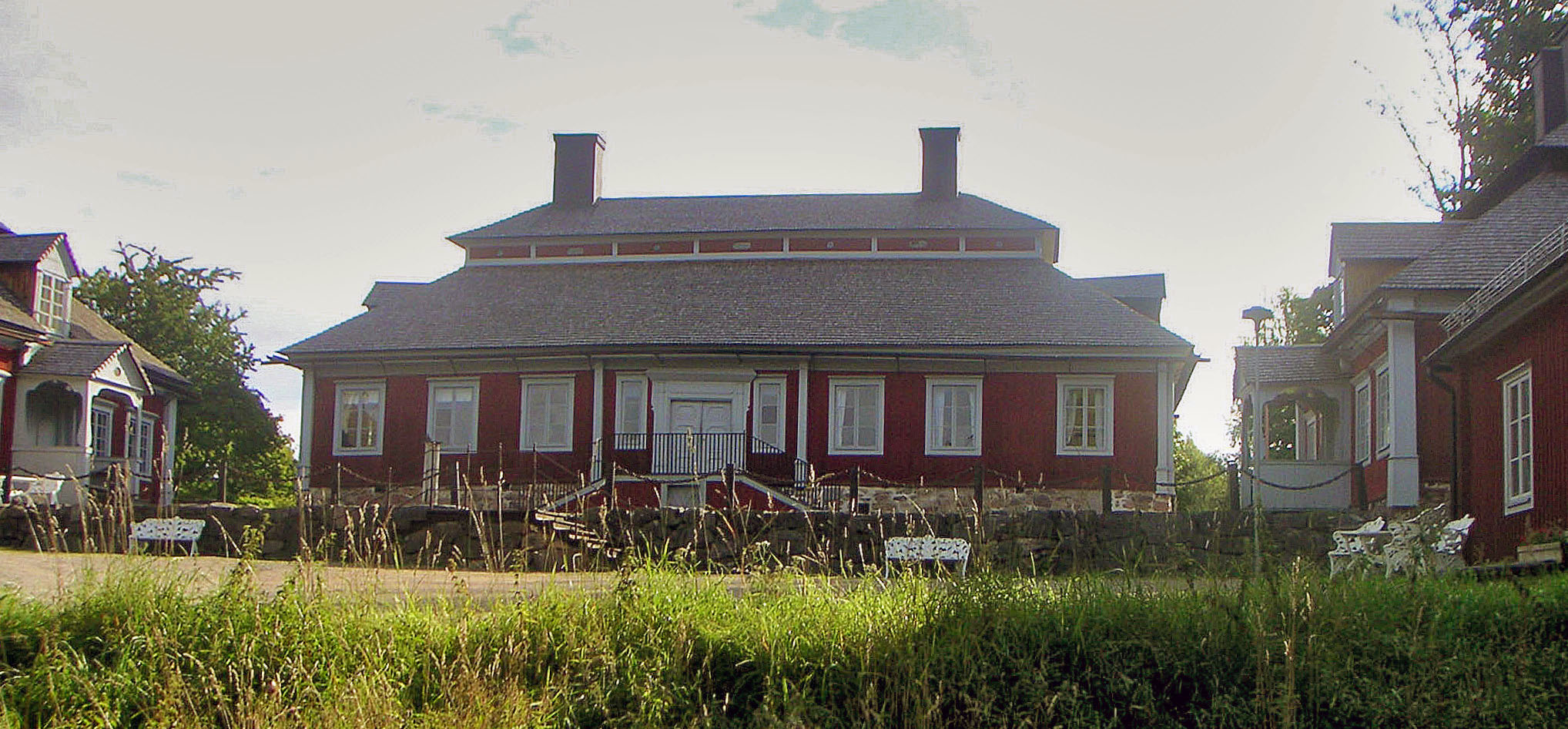
Around the lake Malungen are remains of several prehistoric settlements, the oldest dating from the Stone Age. The oldest written mention of Malingsbo is dated 1459. It is known that iron production started in Malingsbo in the 1500s, according to information about "Jon from Malingsbodal" who in 1539 got an estimate for wrought iron.
A Walloon named Marcus Kock3 was attracted to Sweden during the early 1600s by King Gustav II Adolf. Kock saw the business opportunity in Malingsbo and soon built both blast furnace and the village's first tilt hammer works. It employed the Finnish family men, who previously indulged in slash and burn, more and more often with charring while the women were left to take care of agriculture, livestock and homes. In the mid-1600s Kock build a county mansion for himself in Malingsbo. It burned down unfortunately in 1699.
Iron mill's heyday and fall
The 1700s became the Swedish ironworks heyday and in the middle of the century there were two hammers and four hearths in Malingsbo. Well into the 1800s, it was high activity in the industrial community, but eventually industrialization drove forward demands for greater efficiency and in 1891 running at the mill was finally closed.
In 1899 the state acquired the mill.
Note:
3 Marcus Kock (1585-1657) married Elizabeth van Eijck in Danzig in 1614. They had a daughter Elizabeth who married Jacob Momma (1625-1678, ennobled Reenstjerna No. 818 in 1669) in 1651. Jacob and Elizabeth had a daughter Maria who married Mårten Petersson Snack (1657-1687) in Norrköping in 1686. (genealogical note from Peter Leyel)
Source:
http://www.sfv.se/sv/fastigheter/sverige/dalarnas-lan-w/malingsbo-herrgard
Compiled and translated to English by Peter Leyel
|